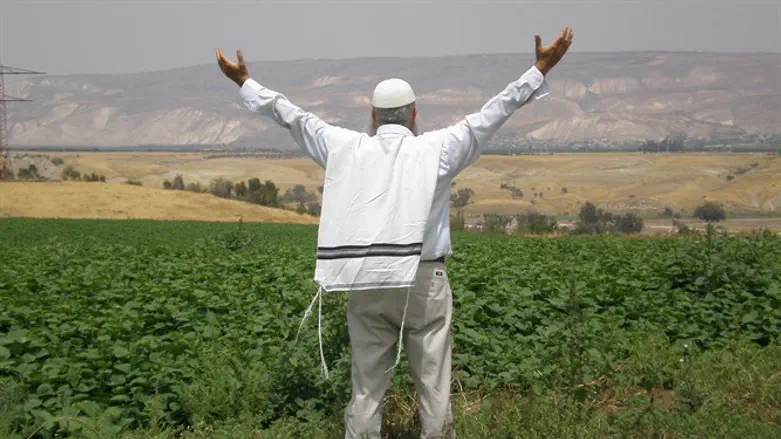
Eight times in his commentary on the Torah, Rashi asks, "Why was Section X juxtaposed to the section before it?"
Although this question can be asked about all the sections of the Torah, we can derive from Rashi's eight sections that they possess a special character.
In the last chapter of Parashat Be'ha'alot'cha, Miriam criticizes her brother Moshe for having divorced his wife Tzipporah. Miriam is severely punished with biblical leprosy.
Parashat Shelach opens with the terrible story of the spies. Rashi explains that the juxtaposition of the story of Miriam with the spy episode serves to teach the severity of the sin of evil gossip. Miriam talked about Moshe and the spies libeled the Land of Israel.
Yet this raises a question: Miriam and the spies did in fact sin, but the punishment appears to be far worse than the crime.
We can answer as follows: Parashat Beha'alot'cha is replete with mitzvot and events:
1. The Menora is carved out of a solid block of gold.
2. The Levites are consecrated
3. Pesach Sheni (the Second Pesach)
4. The clouds that encompassed the Israelite Camp
5. The silver trumpets
6. The Manna
7. The selection of the seventy members for the Sanhedrin
Despite the differences, the common denominator uniting all the topics is that each one has a replacement or serves to replace another item.
1. It is permissible to replace the gold of the Menora with any other metal, and it need not be made from a single piece of metal.
2. The Levites were brought in to replace the firstborn who had forfeited their unique, spiritual status.
3. Pesach Sheni (the Second Pesach) on the 14th of Iyar was for individuals who, because of their impurity, could not bring the Pascal offering on the 14th of Nissan when the first Pesach began.
4. The clouds of glory that hung over the camp by day were replaced by a pillar of fire at night.
5. Moshe's trumpets were replaced by others after his death.
6. The taste of the manna changed according to the wishes of those consuming it.
7. The seventy members of the Sanhedrin served to replace the one-man leadership of Moshe.
The section ends with the story of Miriam and her gossip about her brother Moshe.
The Torah is teaching us that all holy objects, except for the Torah and the Land of Israel, can be replaced.
Moshe was the embodiment of the Torah in this world. To speak disparagingly of Moshe as Miriam did was to denigrate the Torah. To mock the Land of Israel in any way constituted a profanation of God's name. The spies were punished severely for doing so.
Miriam and the spies fell prey to a similar error. The spies perceived the Land of Israel like tourists – water, hills, plant life – a beautiful place, but no different from most of the places on the face of the earth. They saw the land's physical externals but did not understand that this land is substantively different from any other place on the face of the earth. Hence, they were punished.
Miriam made the same error. She saw the greatness of her brother Moshe, and she understood that he was greater and wiser and more holy than any other person. Yet, in her opinion, he was still flesh and blood like anyone else. She missed the fact that although Moshe was, indeed, flesh and blood, he was different from any other person on earth – in his essence, he was like an angel.
In our religious lives, there were and still are repeated attempts by those who wish to replace the holiness of the Torah with other ideals. Christianity, Islam and other religions view themselves as replacing Israel as the chosen people and religion of God. They have never succeeded in this and they never will.
The cities of Satmar, Belz, Lubavitch and the city of Lakewood in the United States cannot achieve the holiness of a single clod of soil in the most forlorn spot in the desert of the Land of Israel.
Rabbi Nachman Kahana is an Orthodox Rabbinic Scholar, Rav of Chazon Yechezkel Synagogue – Young Israel of the Old City of Jerusalem, Founder and Director of the Center for Kohanim, and Author of the 15-volume “Mei Menuchot” series on Tosefot, and 3-volume “With All Your Might: The Torah of Eretz Yisrael in the Weekly Parashah”, as well as weekly parasha commentary available where he blogs at http://NachmanKahana.com